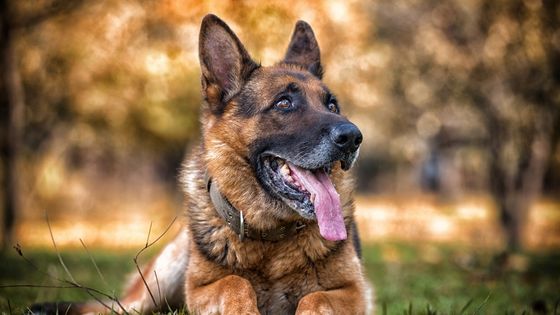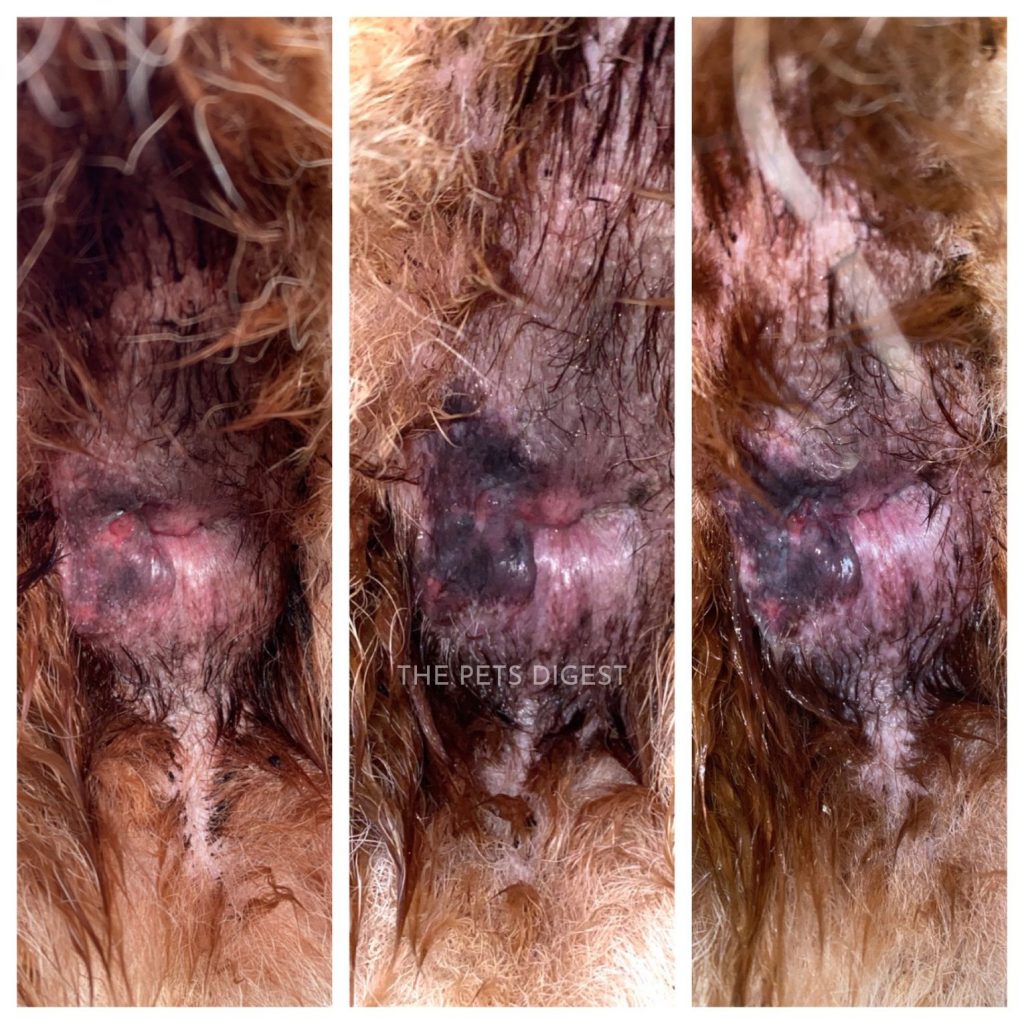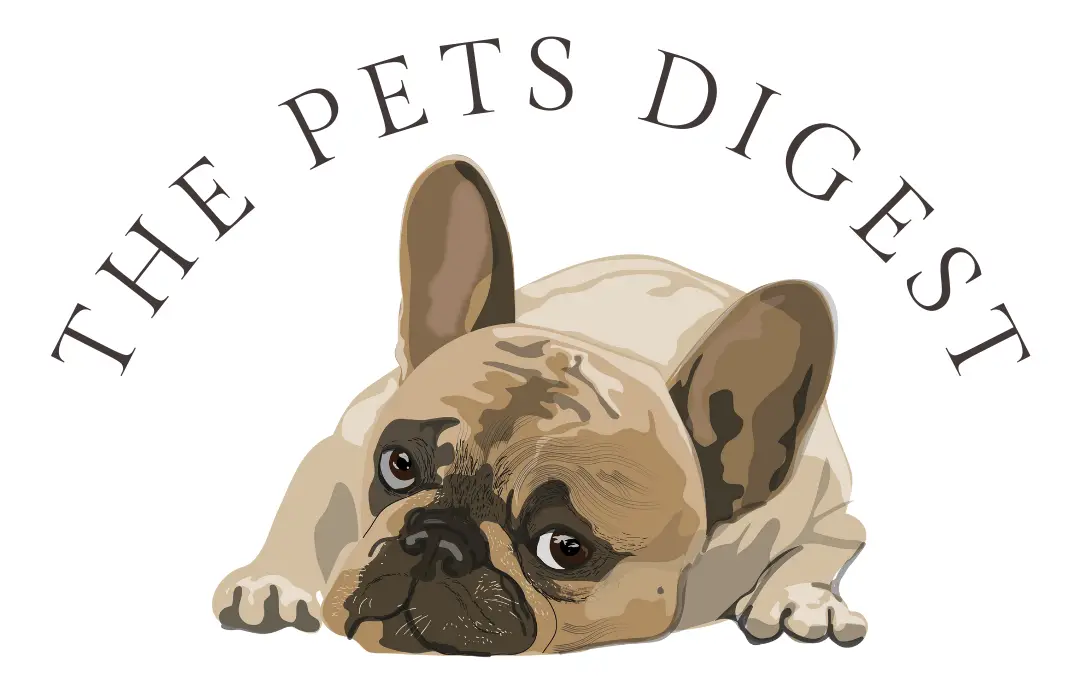Not many owners have had to encounter perianal fistulas (AF), but when they do, it is something they will never forget.
Perianal fistulas, while not as common as some issues in dogs are burdensome for many owners. It is an issue that can occur in any dog but is most commonly seen in middle-aged male German Shepherds.
Perianal fistulas are also called anal furunculosis by some vets and are often characterized by chronic, painful, inflammatory openings near the anus. Some other dogs that regularly get perianal fistulas are:
- Old English Sheepdogs
- Labrador Retrievers
- Border Collies
- Irish Setters
- Bulldogs
- Spaniels

What is a perianal fistula?
Simply put a fistula is an abnormal pathway or connection between either tissue, organs, or vessels inside the body to the surface.
Peri simply means around or about. So, a perianal fistula is an abnormal opening connected to a structure in the body surrounding the anal opening.
The fistula often starts off as a small hole and becomes larger as time goes on.
What causes Perianal Fistulas?
Unfortunately, the cause of the fistulas is still a mystery although there is some speculation as to why they occur.
They may form as a multifactorial immune-mediated mechanism in dogs that have a genetic predisposition to getting them.
In fact, scientists are now researching the similarities to anal fistulas and Chron’s disease in humans which is also an autoimmune disorder.
Other suggested causes include impaction or infection of the anal glands, allergies, and poor air circulation around the anal area due to tail size.
Many of the dogs afflicted have wide and low sitting tails which may lead to bacterial infections, chronic inflammation, and impaction.
The reason for this is that the tail is so wide that it inhibits the normal anal gland expression since it covers much of the tissue surrounding the anus.
While perianal fistulas are seen in breeds with this issue, the large tail is thought to only be a contributing factor and not the actual cause of perianal fistulas.

Signs and Symptoms of Perianal Fistulas
In the earliest stages of the disease, many dogs won’t exhibit any signs and the owner won’t find out much until when signs and symptoms begin, these often include:
- Straining: you may notice your dog has difficulty defecating which may be painful for them to use the bathroom
- Changes in stool consistency: Sometimes your dog may have constipation or diarrhea and there may be blood or an excessive amount of mucus
- Holes around the anus: You may notice either a large or small hole near the anal opening, the hole may have some drainage
- Biting: Your pup may also lick or bite at the area excessively
- Discharge: There is often a concurrent bacterial infection that often causes purulent discharge from the fistula, this may cause a foul odor
- General Discomfort: You may notice your dog sitting or laying awkwardly or attempting to run from the pain in quick bursts of movement and they may also cry out in pain. Your dog may become depressed or have a change in attitude, they may not want to eat, play, or interact with your other pets
How are perianal fistulas diagnosed?
Perianal fistulas are diagnosed by physical examination (which includes a digital rectal examination) and ruling out other causes of the clinical signs presented.
Other diseases that present with fistulization include anal sac disease and neoplasia, your vet will want to rule these out before beginning treatment.
Your vet may also want to check for a secondary bacterial infection, which is done by taking a swab of any pus or purulent material draining from the fistula and checking for bacteria so they can treat with antibiotics if needed.
How are Perianal fistulas treated?
Surgical Intervention: While surgical intervention used to be the gold standard for treating dogs, is now a last resort for many vets.
According to the Merck veterinary manual surgery is no longer advised and now the primary treatment is immune-modulating topical and oral medications, which is said to heal 90% of cases.
Antibiotics are also usually given to treat any secondary infections but are not used as a primary treatment option.
Prevention: Prevention is always the best cure and while perianal fistulas are not completely preventable there may be some things you can do that will possibly minimize the chances that your dog will suffer from the illness.
These include regular anal gland expression, regular walking (which helps natural expression of the anal glands), keeping the tail area and anal opening clean and clear of matted fur, and feeding a diet that has sufficient fiber.
Stool softeners: These are often given to dogs that have significant constipation, one great natural treatment for constipation is plain canned pumpkin.
Diet Change: Many dogs do well switching to a grain-free, hypoallergenic, novel protein (new meat) diet. Vets suspect that this provides benefits due to the autoimmune cause of the disorder.
Cleaning: Clipping and cleaning the perianal area is recommended to increase ventilation and decrease the chances of bacterial infections.
Probiotics: Probiotics are often advised when treating AF’s to increase beneficial bacteria. Here is a link to four great probiotics and how to choose a probiotic for your dog.
Herbal Therapy: Some owners have had success in comforting their dogs with perianal fistulas by using warm compresses with essential oils of lavender, chamomile, calendula, and red clover tea.
Holistic Supplementation: In an article published by the Brazilian Journal of Development, it was shown that dogs had a complete resolution of the disease in fifteen days without complications using a cocktail of Arnica Montana, Belladonna, Hamamelis Virginiana (witch hazel), and Nitric Acidum.
The medications were administered intravenously, topically, and orally. It isn’t recommended that you administer without the supervision of a holistic veterinarian as some of the medications can be poisonous.

Key things to know about perianal fistulas
- Treatment is always recommended as the longer owners wait to treat the more chance they have of the fistula extending to other parts of the body, including the rectum and anus. Not to mention it is extremely painful and a study showed that persistent occurrences can lead to cancer in 0.1 % of all anal fistulae.
- It usually takes about 8-12 weeks of consistent treatment for the fistula to completely resolve
- During the healing process, it is always a good idea to use an e-collar so that your dog can’t lick at the area, which impedes healing in many cases
- Some veterinarians suggest tail removal to help with aeration of the area and cleanliness
- Even with treatment and complete resolution, the disease has a fairly high recurrence rate, so always keep an eye out for returning clinical signs. The ACVS states there is an 80% reoccurring rate of dogs with perianal fistulas
- Breeding dogs that have perianal fistulas is generally frowned upon since it is most likely a genetic disorder and can be passed down to the pups.
- In some cases, the fistulas persist or recur for life and these dogs will require lifelong medical management
References

























































































































